MXA RACE TEST: 2017 KTM 250SXF — THE MISSING PIECE
Click on images to enlarge
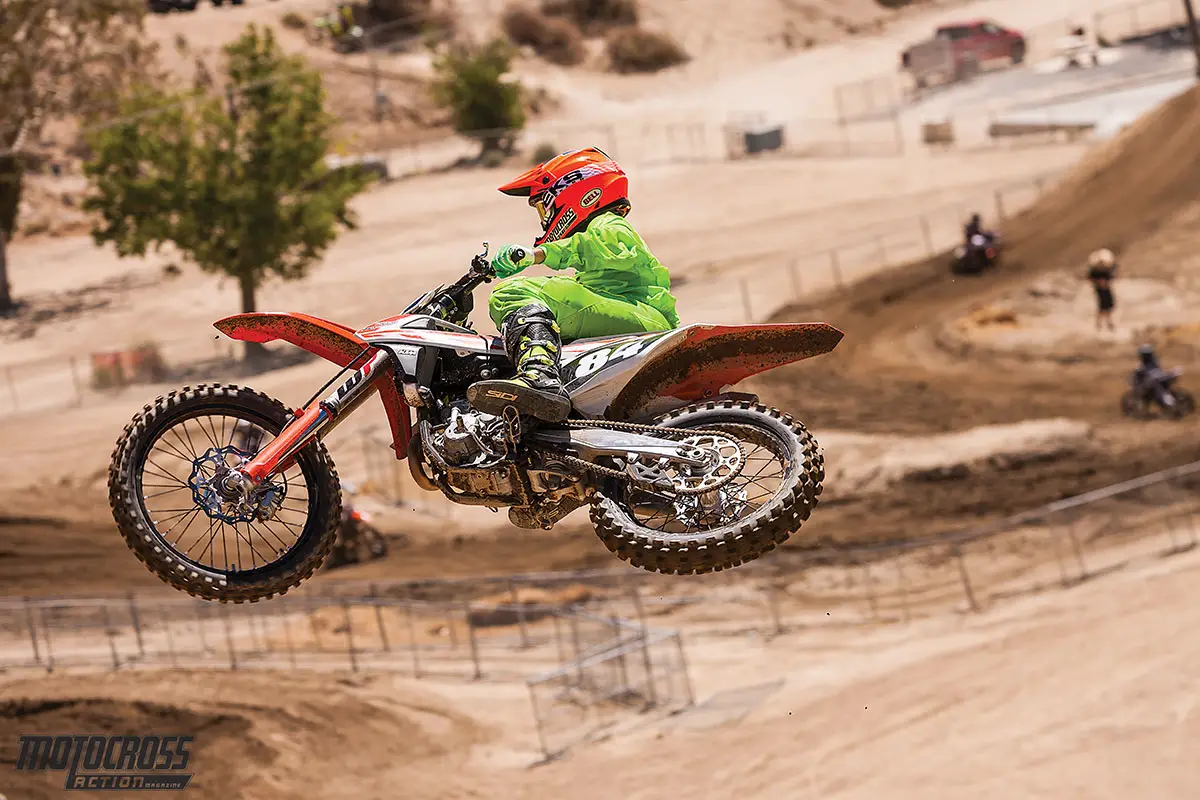
Q: FIRST AND FOREMOST, IS THE 2017 KTM 250SXF BETTER THAN THE 2016 250SXF?
A: Yes. There is no way around the impact that the new WP AER 48mm air forks have on the performance of the 2017 KTM 250SXF. With the air forks, every aspect of the 250SXF is improved—not just bump absorption, but comfort, cornering, traction and overall feel.
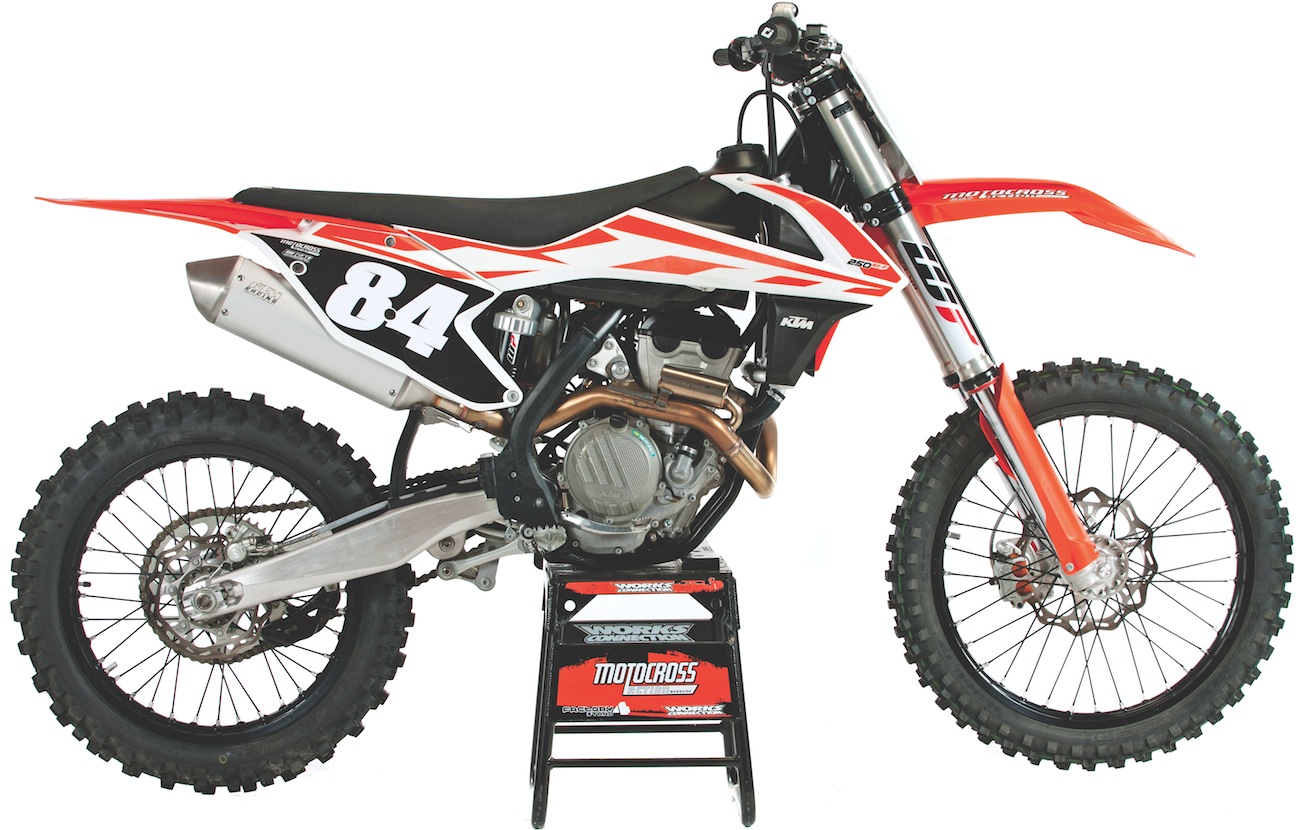 The 2017 KTM 250SXF is a total commitment Pro-level bike. If you are willing to rev it to 14,000 rpm you will be rewarded with the fastest laps of your life.
The 2017 KTM 250SXF is a total commitment Pro-level bike. If you are willing to rev it to 14,000 rpm you will be rewarded with the fastest laps of your life.
Q: WHAT MAKES THE 2017 KTM 250SXF ENGINE DIFFERENT FROM ITS COMPETITION?
A: The 2017 KTM 250SXF is blazing fast, most notably from 12,000 rpm until the rev limiter kicks in at 14,000 rpm. It should be noted that it is not really any faster than the 2016 model that it replaces, because mechanically there are no differences between the 2016 and 2017 engines; however, it does make more horsepower than the 2017 YZ250F, KX250F, RM-Z250 and CRF250. However, it is not just a little more powerful than the blue, green, yellow and red bikes; it’s a lot more powerful.

Now, you might be asking yourself, how can one engine make so much more power than its competition? The answer is revolutions per minute. KTM’s engineers designed the engine to rev—not just for the 14,000 rpm of the production bike, but for the 15,000 to 16,000 rpm of their works bikes. In the search for rpm, KTM eliminated needle bearings from the top and bottom end, preferring to use plain bearings (actually a bushing) that had no moving pieces to blow apart when the rpm went stratospheric. They downsized the engine so that its compact architecture would only weigh 57.5 pounds, thanks to titanium valves, a finger-follower drivetrain, 14:1 CP piston, die-cast cases and a throttle body with the injector nozzle on the bottom of the throat. When you turn 14,000 rpm and maximum power is at the apex of the rpm range, you can’t help but be fast.
Q: HOW FAST IS THE 2017 KTM 250SXF?
A: The result of KTM’s creative engineering is an ear-piercing 43.79 horsepower. As for the “Big Four’s” horsepower numbers for 2017, the Yamaha YZ250F makes 40.98 horsepower, the KX250F 40.06, the CRF250 38.89 and the RM-Z250 38.34. With a massive numerical advantage, the speed of the 2017 KTM 250SXF is not in question. What is in question is whether you, and you in particular, have the talent to twist the throttle to the edge of reason, because that’s where the horsepower lives. This is a total-commitment powerband. You either go for broke or you come up bust. There’s no short-shifting in KTM city. The 2017 KTM 250SXF has no equal at full tilt, save for the Husqvarna FC250, which uses the exact same engine. If you are not ready to fully commit, then you are not ready for the 250SXF.
The KTM 250SXF is not weak down low; it’s just not what the Katoom does best. Off the bottom the 2017 KTM 250SXF snaps to attention, but not with the fervor of the YZ250F, KX250F or CRF250. KTM’s low-to-mid transition is solid enough to generate initial thrust. Once in the midrange, the surge demands respect; but, if you cruise around at 12,000 rpm, you will be leaving horsepower on the table. Where the real power advantage lies is on the bitter edge of the rev limiter. Peak power and peak rpm are where you want to be. We know lots of KTM 250/350SXF racers who were positive that they were revving their bikes to the moon, but when they looked at their hour meters ( the kind that record max rpm), they found out that they were only going to 10,000 rpm — not 14,000. You gotta bleed it dry.
If you are talented, brave or stupid, this will be the fastest 250cc four-stroke you’ll ever race. If you are slow, the best strategy is to stick it in second gear and refuse to shift. That way you’ll rev it until the cows come home, but not have to dance on the precipice of disaster. This is a Pro powerband.
Q: DOES THAT MEAN A 250 NOVICE SHOULDN’T BUY A 2017 KTM 250SXF?
A: No, but the KTM engineers’ search for horsepower via revolutions is risky. If they are successful, two things happen: (1) They get accolades for producing the most powerful bike in the class—and the 250 class is all about horsepower. (2) They alienate a large percentage of the buying public, which is made up of 90 percent more slow riders than fast riders. In truth, we don’t know if KTM is winning the war, but we do know that KTM is losing the current sales battle to the more usable midrange powerband of the Yamaha YZ250F.
For years—decades, actually—we have harped on KTM to produce a powerband that focused more on the midrange and less on F1-style rpm. KTM’s engineers haven’t listened, but to their credit, they have pushed their horsepower numbers so high that it’s hard to resist the charm of the most powerful engine.
So, short of throwing caution to the wind, what is a Novice to do if he wants to get the most out of the 2017 KTM 250SXF? That’s simple. Change the gearing. Paradoxically, we recommend making the gearing both taller and lower. How can that be? Here’s a quick explanation.
(1) Gear it down. The gearing was changed in Austria for 2017—and not in a good way. The problem for riders below Pro speed is that KTM changed 2016’s 13/50 gearing combination for a 14/51 ratio in 2017. Depending on the track layout, many Novice and Vet riders have trouble getting the 2017 KTM 250SXF (and Husqvarna FC250) all the way to 14,000 rpm before they run out of straight. The solution is simple. Leave the 51-tooth rear sprocket on your 2017 KTM 250SXF and put a 13-tooth countershaft sprocket on the front. The tighter gearing will make it easier to get on the pipe sooner and develop enough thrust to get full use out of the high-rpm powerband. The current 14/51 gearing on your bike is the equivalent of running a a much taller 13/47 your 2016 250SXF.
(2) Gear it up. Switching to a 50-tooth rear sprocket from the stock 51-toother will make each gear longer and allow you to stay in the sweet spot of the powerband longer—albeit in a lower gear. That means you will carry second gear farther, followed by third and so on. This strategy works best for riders with a modicum more talent, because without a steady wrist, there could be some bogging down on the exit of turns as the power has to jump a bigger gap with each shift. Most Intermediates and Pros should stil with the 15/51 gearing.
Q: WHAT ABOUT THE ELECTRONIC AIDS?
A: Last year the 2016 KTM 250SXF had a flick-style switch on the right side of the handlebars that allowed racers to choose between the stock map and either an aggressive map or mellow map, which had to be selected via a dial hidden in the airbox. This year, there is a rubber-covered multi-switch on the left side of the bars that activates two maps (stock and aggressive), launch control and traction control.
Map switch. When you press the rubber-covered button on the bottom of the multi-switch, a lighted number is displayed on the face of the multi-switch. Number one is stock and number two is aggressive. Every MXA test rider chose to run the aggressive map, because it produced quicker throttle response and helped jump the power up to the midrange where it does its best work. There is no mellow map option.
Traction control. KTM’s traction control system works by monitoring runaway revs. When the engine suddenly free-revs, it is a sure sign that the rear wheel is spinning. To stop the wheel from spinning, the ECU retards the ignition, which slows the engine down and helps get the rear wheel hooked up again. Most MXA test riders eschewed using traction control on anything short of rock-hard dirt or full mud. It was plain irritating on prepped dirt. However, it worked great as a replacement for the nonexistent mellow map.
Launch control. To engage launch control, the racer must press the map button and the traction control button simultaneously until the indicator light behind the front number plate flashes. Once launch control is engaged, you must not allow the rpm to drop by more than 30 percent or launch control will shut off—and you cannot re-engage it without shutting the engine off. Let’s face it; this is a 250cc motocross bike. If you need launch control to get it off the line, you need to find a new sport.
Q: HOW GOOD ARE THE 2017 WP AER FORKS?
A: WP’s take on air forks is more in line with what an air fork should be—a simple replacement system for coil springs. Showa and Kayaba have been trying to reinvent the wheel and have made their PSF-2 and SFF TAC forks overly complicated. The KTM’s WP AER air forks are ingenious in their simplicity. They have an air cartridge, similar in concept to a bicycle pump, in the right fork leg. There is only one Schrader valve on the AER forks, not three as on the SFF TAC forks. Since the air takes the place of the two coil springs in the previous WP 4CS forks, the weight savings is 3.6 pounds. All the damping is handled by the left fork leg via compression and rebound clickers (one on the top and one on the bottom). It doesn’t have four different clickers like the Honda’s Kayaba PSF-2 forks or six like the Suzuki’s RM-Z450 forks. Setup on the AER forks is simple. Find the proper air pressure for your speed, and then click in your favorite compression and rebound settings.
It is hard to believe that KTM could turn its fork fortunes around in a single year, but it did. These forks first showed up in America on the 2016 Factory Editions, and KTM’s test department took what they learned from Factory Edition owners to re-valve the 2017 forks to perfection. You can race these forks right off the showroom floor, and, as a bonus, they make the rear shock and its new 42 N/m spring work better too.
Q: HOW DOES THE 2017 KTM 250SXF HANDLE?
A: We love the way this bike handles. You think it, it does it. No oversteer. No understeer. No hinge in the middle. It’s as neutral as Switzerland.
Q: WHAT DOES IT WEIGH?
A: It hits MXA’s amazingly accurate scales at 218 pounds sans gas. What does the competition weigh? The Kawasaki KX250F weighs 221 pounds. The Yamaha YZ250F weighs 222 pounds. The Honda CRF250 weighs 224 pounds, and the Suzuki RM-Z250 weighs 226 pounds.
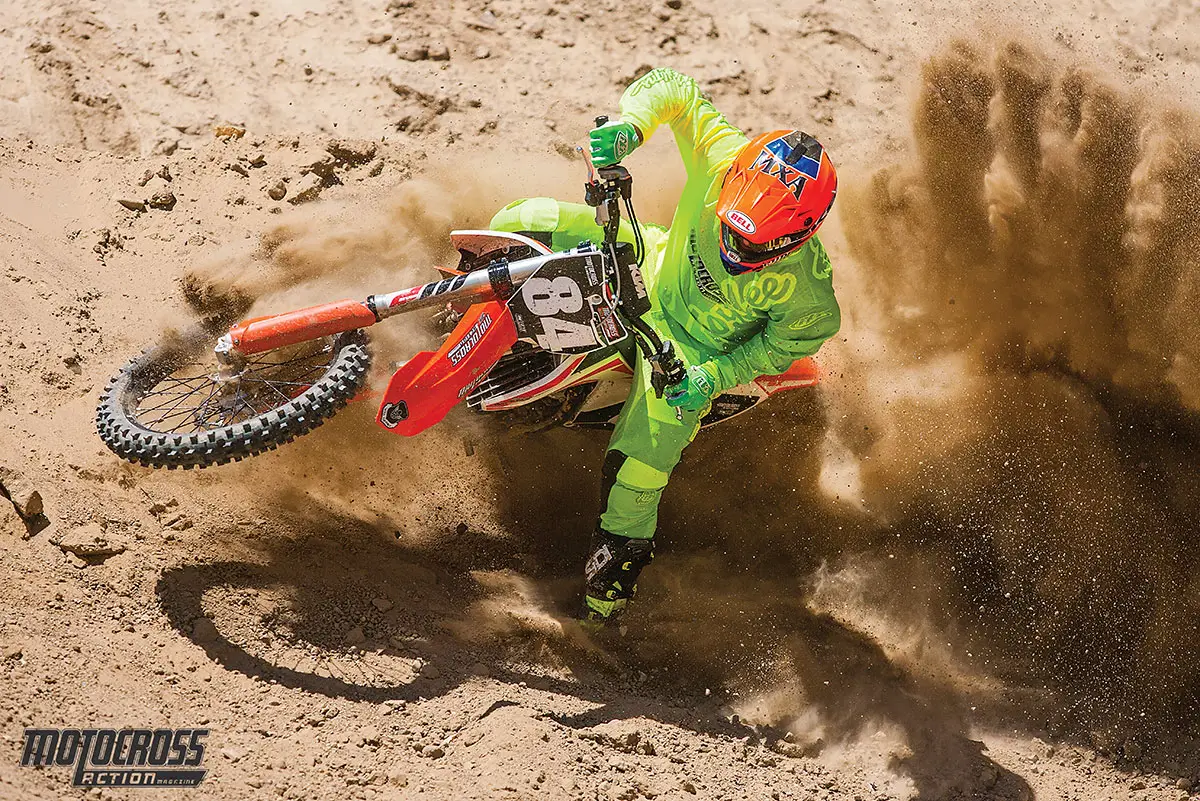
Q: WHAT CHANGES DID KTM MAKE TO THE 2017 250SXF?
A: There are no changes for 2017 that are unique to the 250SXF. The 10 major changes on the 2017 250SXF are also found on the 350SXF and 450SXF. Here is the list.
(1) Air forks. WP AER front forks replace last year’s WP 4CS forks. The WP air forks are a big contributor to the KTM’s astonishing performance—and it’s unprecedented lightness. KTM supplies a digital air pump with every bike.
(2) Shock spring. Last year the 2016 KTM 250SXF and Factory Edition came with the 45 N/m shock spring. This year the 250SXF gets a more appropriate 42 N/m spring. In fact, every 2017 KTM motocross model will get lighter spring rates. The 450SXF is spec’ed with a 45 N/m spring. The 350SXF, 250SXF and 250SX two-stroke will come with 42 N/m springs, while the 125SX and 150SX are spec’ed with 39 N/m springs.
(3) Map switch. Gone is the flick-style selector switch that toggled back and forth between two maps and activated launch control. In its place is a multi-switch on the left side of the bars that toggles between two maps, launch control and traction control.
(4) Traction control. New for 2017, KTM has added a traction-control feature to the electronic package on the KTM four-strokes.
(5) Brake pedal. The rear brake pedal is now 10mm longer than it was in 2016. Owners of 2016s can order a 10mm-long brake tip from 7602 Racing that does the same thing. Retail price is $34.95 at www.7602racing.com.
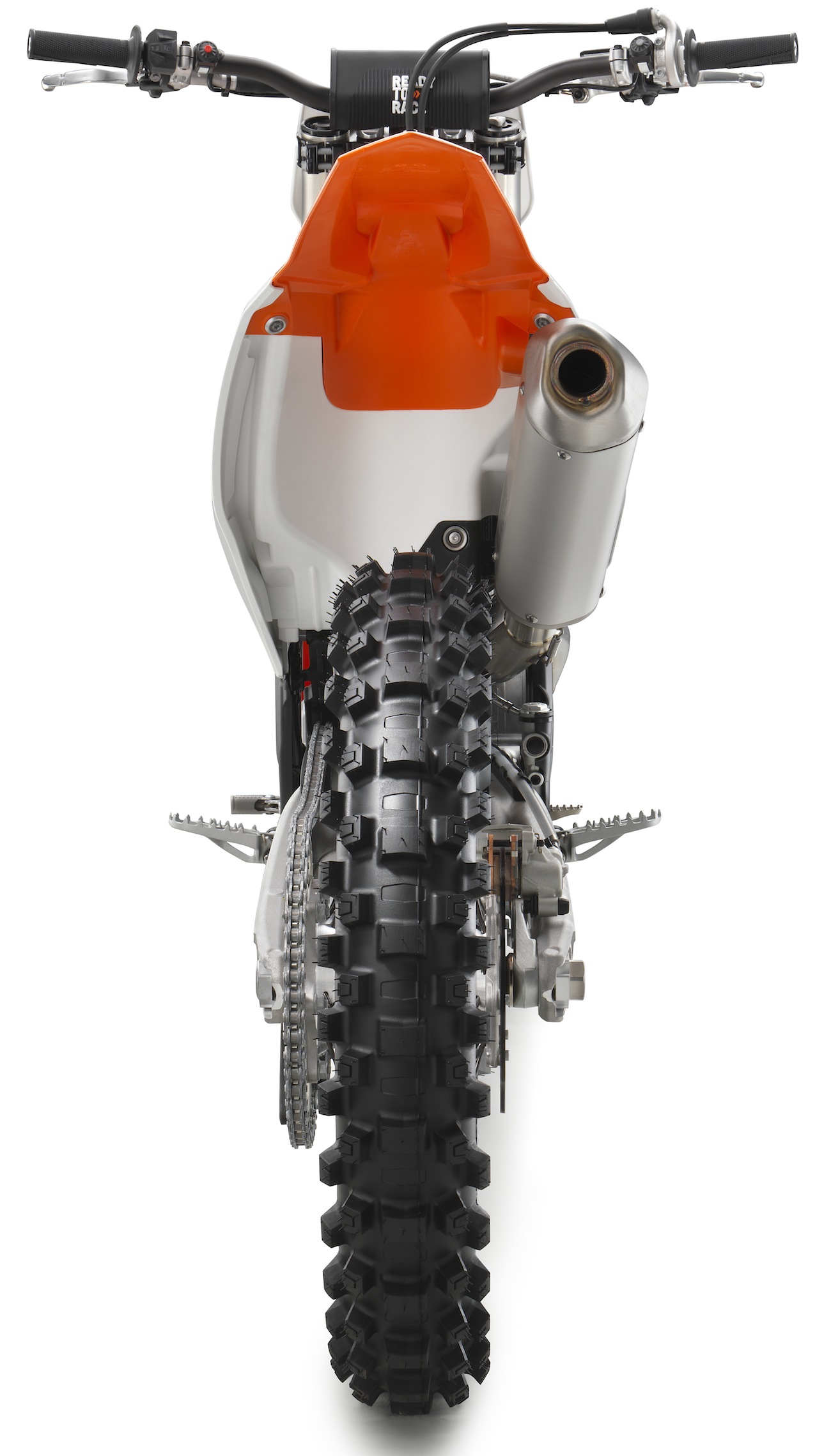 (6) Rear brake pads. For 2017, the rear brake pads have a less-aggressive compound. Many racers felt that the previous rear brake pad was too grabby and could overheat if used too aggressively; however, if you liked last year’s brake pads, they retrofit.
(6) Rear brake pads. For 2017, the rear brake pads have a less-aggressive compound. Many racers felt that the previous rear brake pad was too grabby and could overheat if used too aggressively; however, if you liked last year’s brake pads, they retrofit.
(7) Head stays. Last year’s steel head stays have been replaced with thicker and stiffer cast-aluminum stays that are 60 grams lighter.
(8) Triple clamp. The top triple clamp is more rigid in 2017 than it was in 2016. It is designed to mate better with the flex characteristics of the air fork. The difference is noticeable in that the machined hole in front of the steering-stem bolt has disappeared.
(9) Hour meter. There is an hour meter installed on every KTM. It is located neatly behind the front number plate in the spot where the hole used to be in the top triple clamp.
(10) Handlebar clamps. Last year the bars were mounted to a one-piece lower bar mount with two separate top bar-mount clamps. For 2017 the bottom bar mounts are now two separate pieces, while the top bar mount is one piece. KTM says this will prevent twisting. We didn’t notice a lot of difference between the two and still twisted bar mounts in crashes.
Q: WHAT DID WE HATE?
A: The hate list:
(1) Gas cap. It sticks. We’ve had test riders who couldn’t get it off at the gas station.
(2) Exhaust. Removing the stock exhaust requires several annoying steps, including swearing once you realize that you have to remove the shock to get the pipe off.
(3) Sprocket bolts. Watch them for as long as you own the bike.
(4) Gearing. Nobdu know why the Austrian engineers switched to an ultra-tall 14/51 gearing for 2017, but we can tell you that it was a mistake. Do yourself a favor and removed the 14-tooth countershaft sprocket and replace it with a 13-toother. This will give you the favored 13/51 gearing of most MXA test riders.
(5) Spokes. Always check the spoke next to the rear rim lock. If it is loose—and five times out of 10 it will be—tighten all the spokes. KTM needs to rethink this issue. The spokes are an issue aqnd if your are fast , heavy or race on jump filled tracks, consider having the stock hubs relaced with stronger spokes.
(6) Neutral. We love how well the KTM shifts from gear to gear, but we hate how hard it is to get into neutral when standing still. Sometimes we can rev the engine and get the tranny into neutral as the revs fall off, sometimes we can cost into the pits and snick it into neutral before we stop and most of the time we shift it into neutral by hand.
(7) Shock collar. We hate this shock collar. Sometimes it works and sometimes it doesn’t. KTM warns against hitting it with a hammer and a punch, but we really want to hit it with something. The best way to turn the shock collar is to pry on the notches in the collar with a long screwdriver, while turning the spring by hand (of course it depend son how many hands you have).
(8) Torx bolts. Do you own a #20 Torx wrench? How about a #15? You can’t bleed the forks without a #20 or remove the left-side ODI lock-on grip without a #15.
Q: WHAT DID WE LIKE?
A: The like list:
(1) Handling. It’s a dream.
(2) Hydraulic clutch. This clutch is durable enough to last in the hands of a clutch abuser. We know, because the MXA wrecking crew has several test riders who use the clutch as an auxiliary throttle.
(3) Weight. How do engineers get a bike this light? They start planning each and every part four years early.
(4) Power. A few years ago 40 horsepower was the magic mark—and two of the four Japanese brands have hit that target. Unfortunately for them, KTM and Husqvarna are pushing 44 horses.
(5) Hour meter. The best thing about the showroom stock KTM hour meter is that they put it on for you.
(6) Air filter. It’s not enough that the KTM has electric starting, the lightest weight, the most horsepower and the best brakes, it also has an air filter that is so easy to install that it warms the cockles of our hearts.
(7) AER forks. We would have been happy just to get forks that worked better than the 4CS forks, but the AER forks are the best air forks on the track.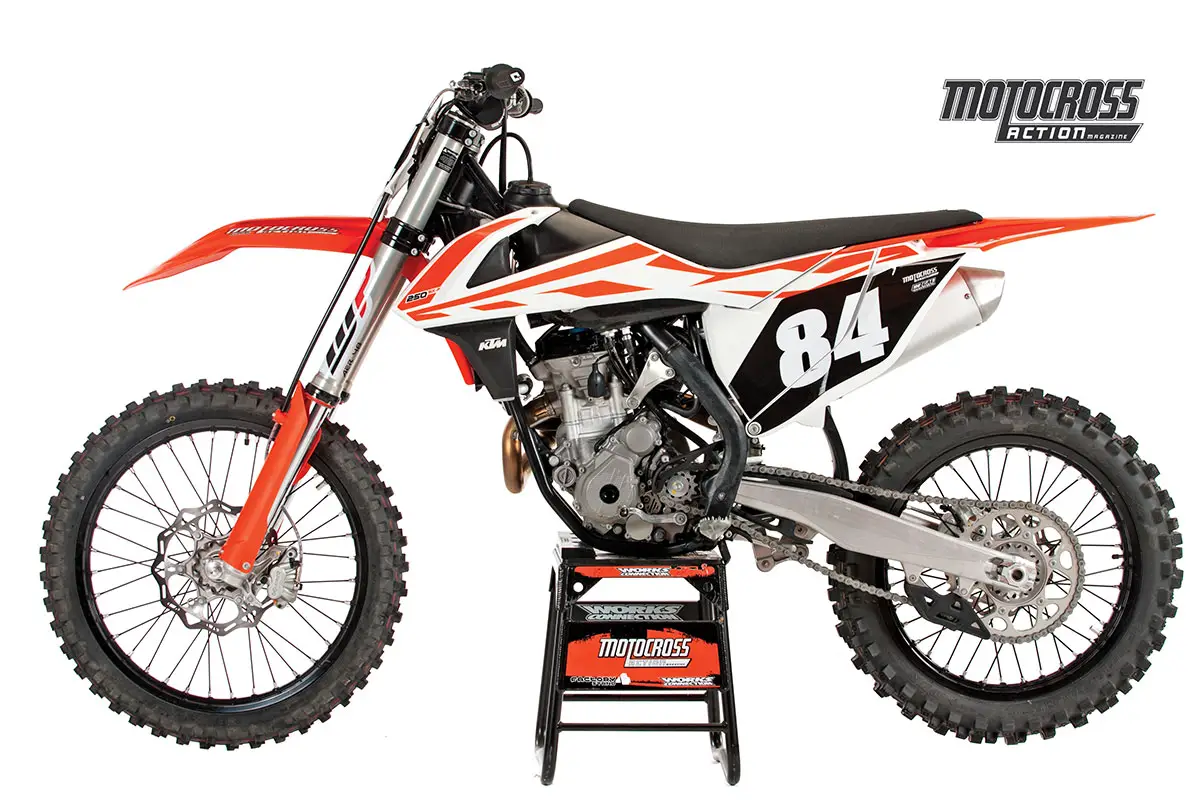 Q: WHAT DO WE REALLY THINK?
Q: WHAT DO WE REALLY THINK?
A: If you’re an aspiring Pro, then you’ve found your machine. It already makes works-bike power, weighs less than you will at 40 years old and has a whole cadre of features that the Japanese brands might get around to in a few years. However, if you are a Novice or a Vet, you need to look in the mirror and assess whether the guy looking back at you can live life at 14,000 rpm.
MXA’S 2017 KTM 250SXF SETUP SPECS
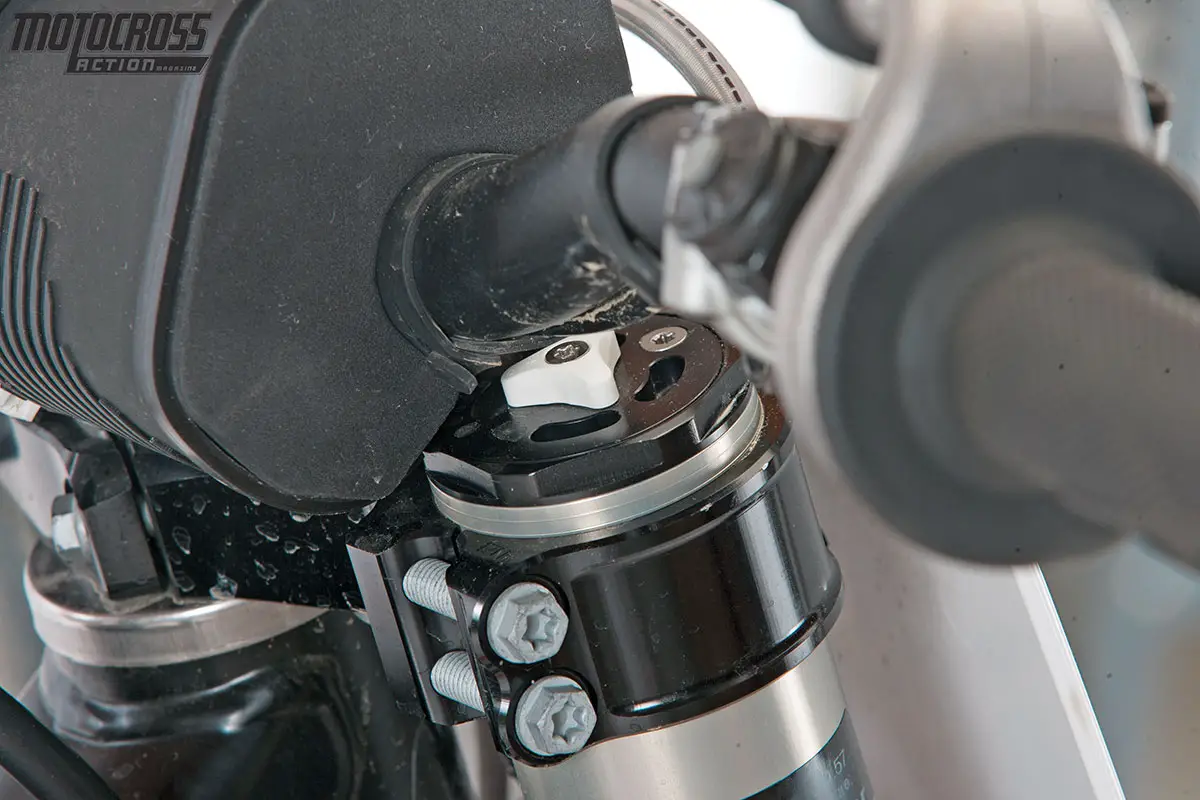
This is how we set up our 2017 KTM 250SXF for racing. We offer it as a guide to help you find your own sweet spot.
AER FORK SETTINGS
It’s important to note that any recommended air-fork setting is totally dependent on the weight and speed of the rider. As a rule of thumb, MXA doesn’t choose its settings for Pro riders. Pros favor jackhammer settings that can’t be used by the larger majority of motocross riders. We try to choose middle-of-the-road air pressure that works for a wide variety of skill levels. The trick to getting the most from your WP AER air forks is to find the proper air pressure for your weight, speed and track. In the case of all the 2017 KTMs, we think that the recommended stock air pressures are at the top of the scale and that most riders should work down from there. How far down? We’ve gone as low as 130 pounds, but we typically start testing at the OEM-recommended air pressure and then lower it in 2-psi increments until the forks don’t feel like they are dropping into their stroke. Typically, AER forks ride high in their stroke with the stock pressure. Once we find the right pressure we focus on clicker changes. For hardcore racing, we recommend this fork setup on the 2017 KTM 250SXF (stock specs are in parentheses):
Spring rate: 140 psi (154 psi)
Compression: 20 clicks out (17 clicks out)
Rebound: 15 clicks out (17 clicks out)
Fork-leg height: Third line
Notes: It is possible that some racers won’t get full travel no matter how low they set the air pressure. In that case, we suggest lowering the oil height in the damping leg by 10mm or more to get full travel. Additionally, except for extreme temperature changes, you should not have to change the AER’s air pressure as often as on other air forks; however, we do bleed the outer chamber constantly, which is accessed via a 10mm hex head or #20 Torx. Even if you own a #20 Torx, don’t use it on the air side leg, because the bleed screw strips out easily.
WP SHOCK SETTINGS
Last year the KTM 250SXF came with a stiff 45 N/m shock spring. This really wasn’t the best spring rate for the typical 140-pound 250 four-stroke racer, especially given that most MXA test riders ran a 45 N/m spring on their 2016 450SXFs, and that is what KTM spec’ed for the 450SXF for 2017. The 2017 KTM lowered the shock spring rate to a 42 N/m rate. This is a big improvement for the 250SXF’s target audience. For hardcore racing, we recommend this shock setup for the 2017 KTM 250SXF (stock specs are in parentheses):
Spring rate: 42 N/m
Race sag: 105mm (110mm)
Hi-compression: 2 turns out
Lo-compression: 15 clicks out
Rebound: 10 clicks out (15 clicks out)
Notes: As a rule of thumb, we use the high-speed compression to iron out the balance of the rear suspension, typically varying by a quarter-turn in either direction. Our biggest change is to the rebound damping, which we think is too fast in consecutive bumps. Additionally, we set the sag at 105mm instead of the WP-recommended 110mm.


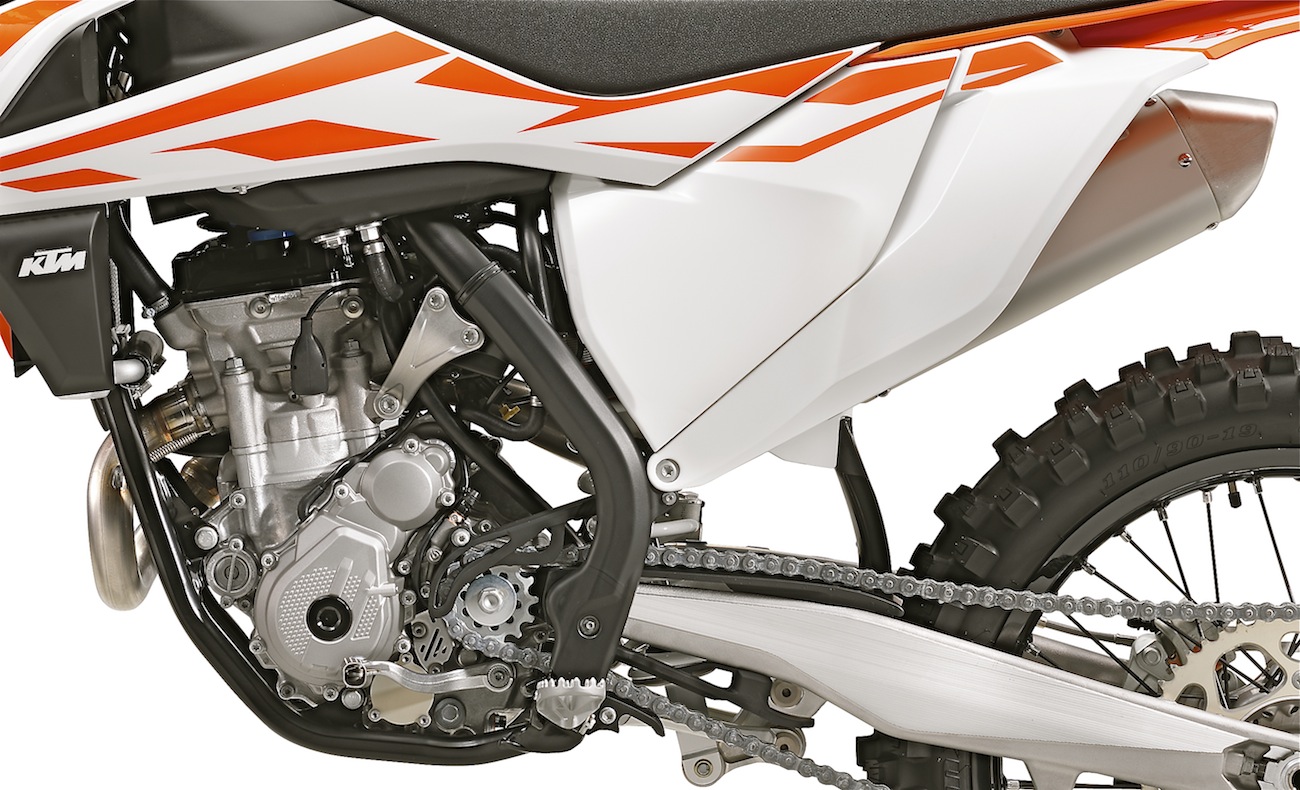
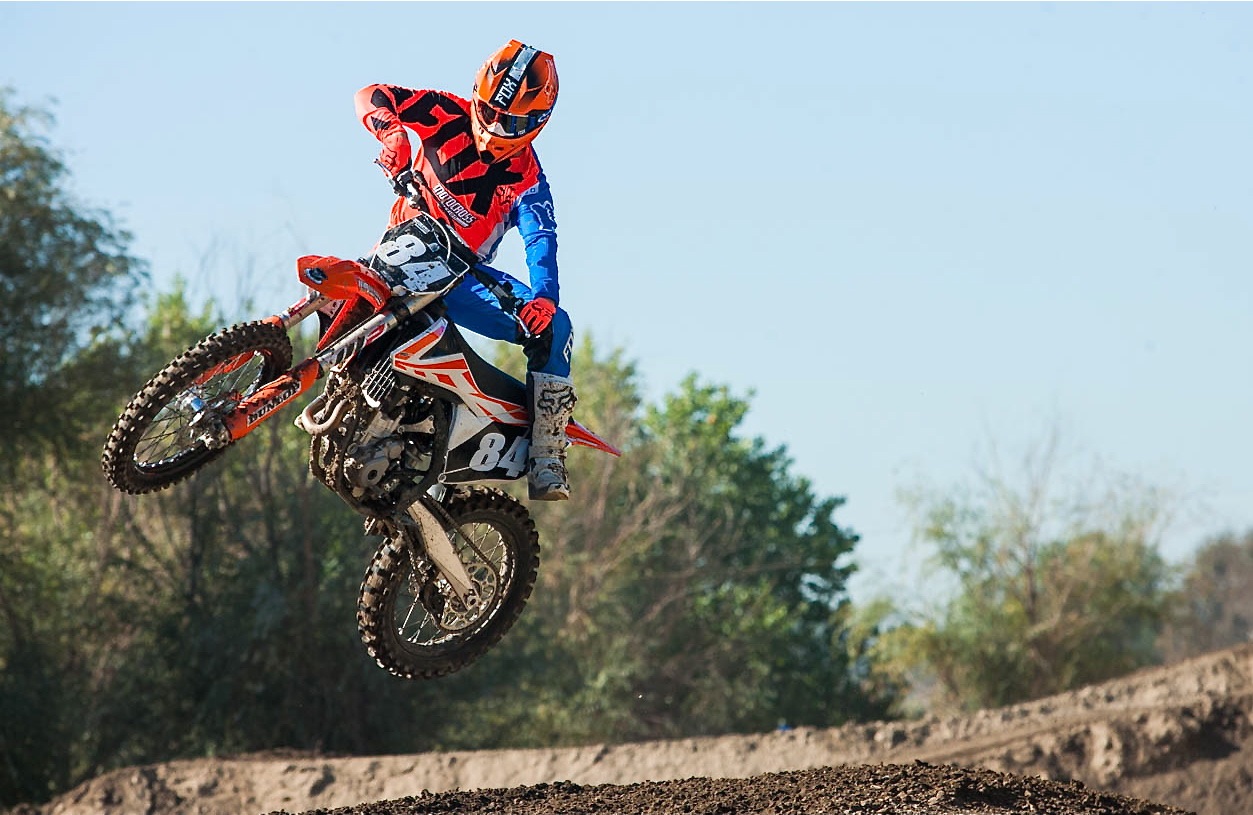

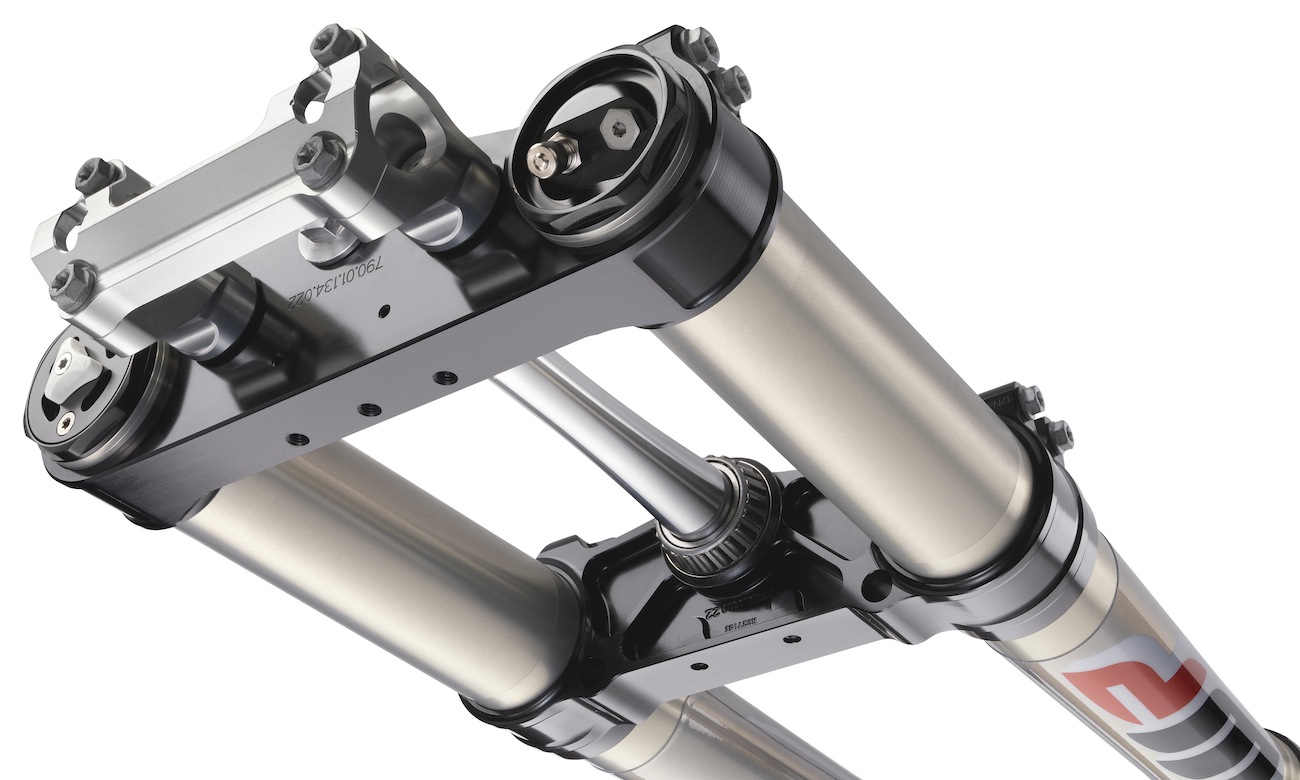
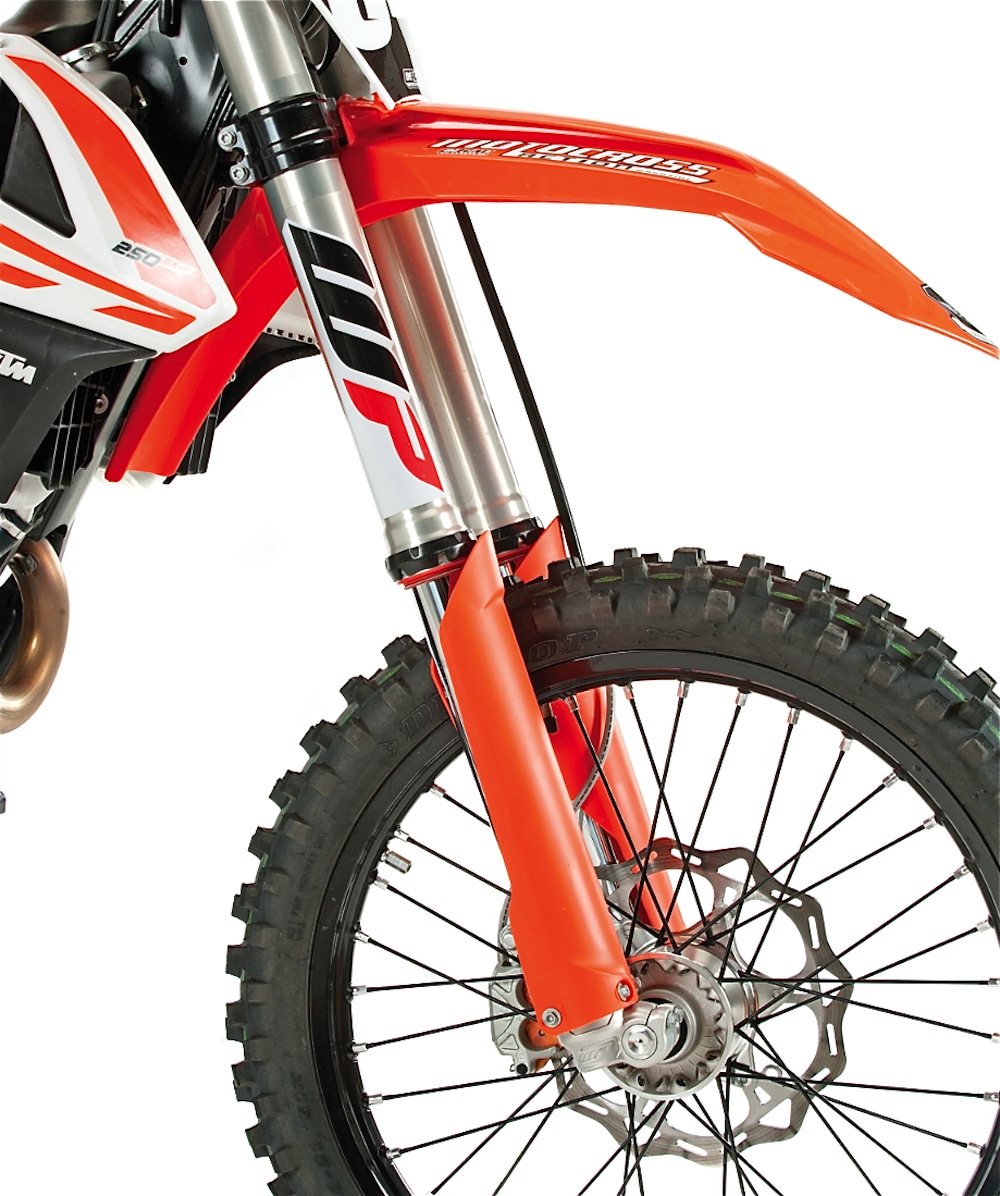

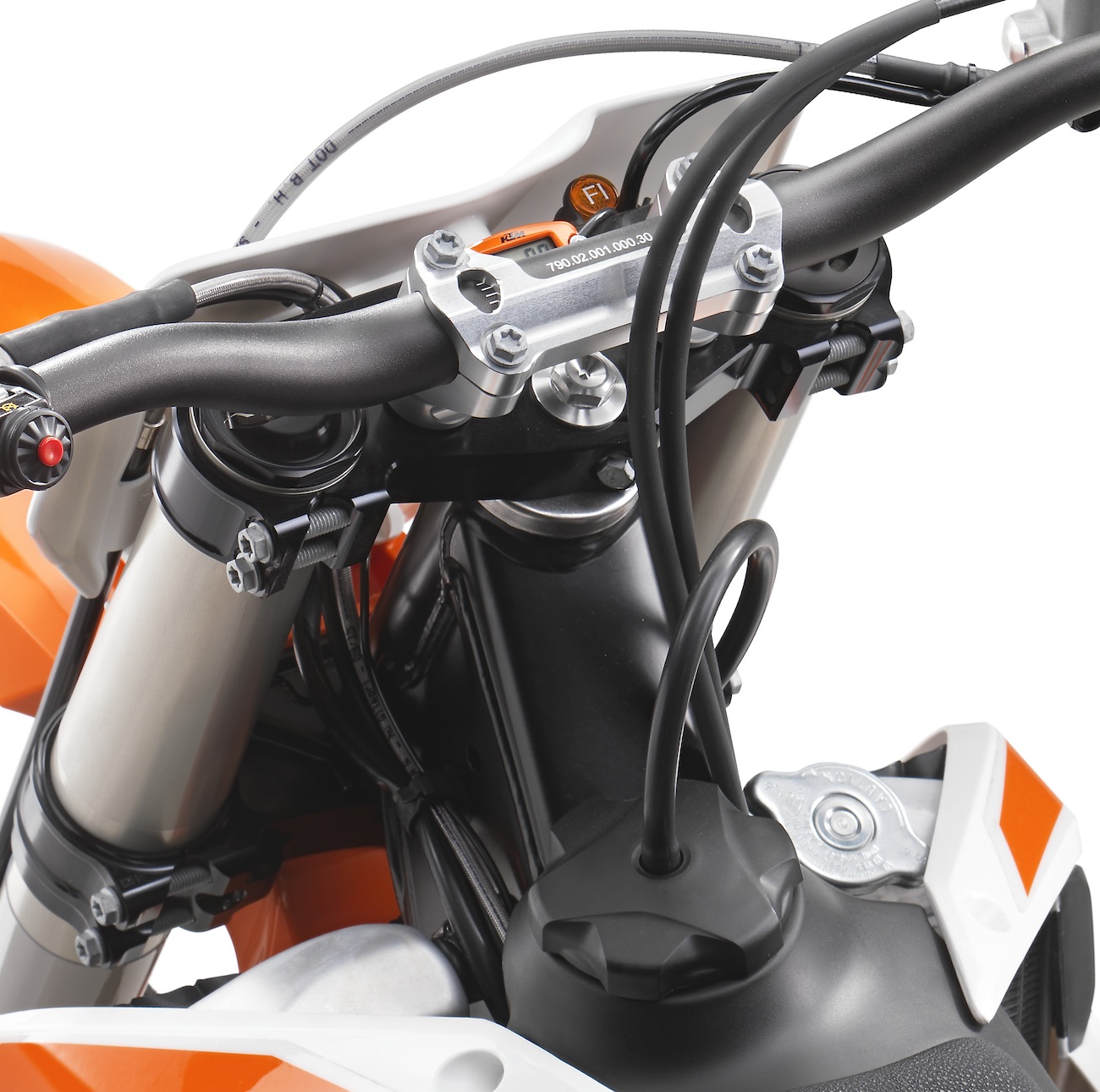
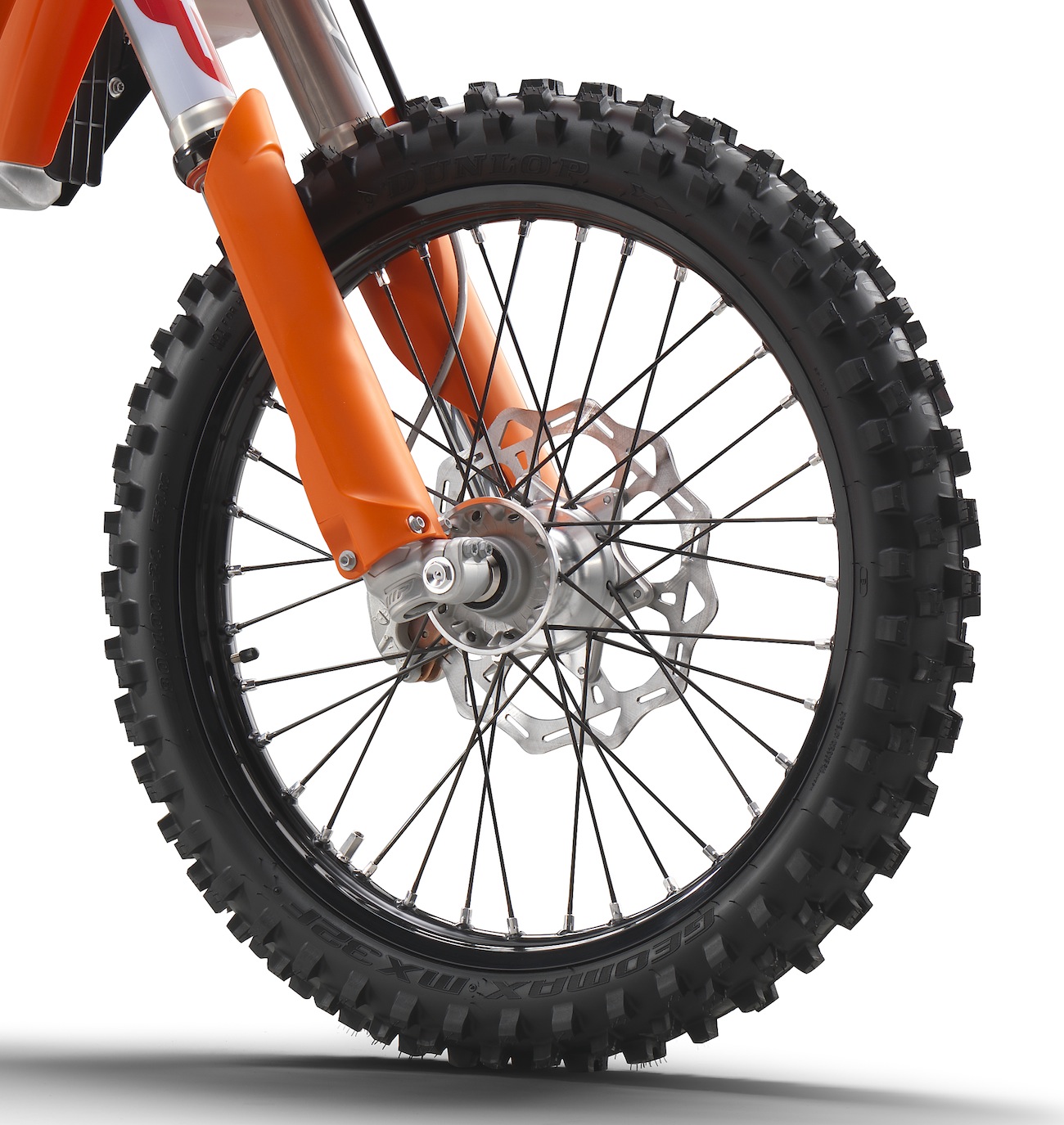
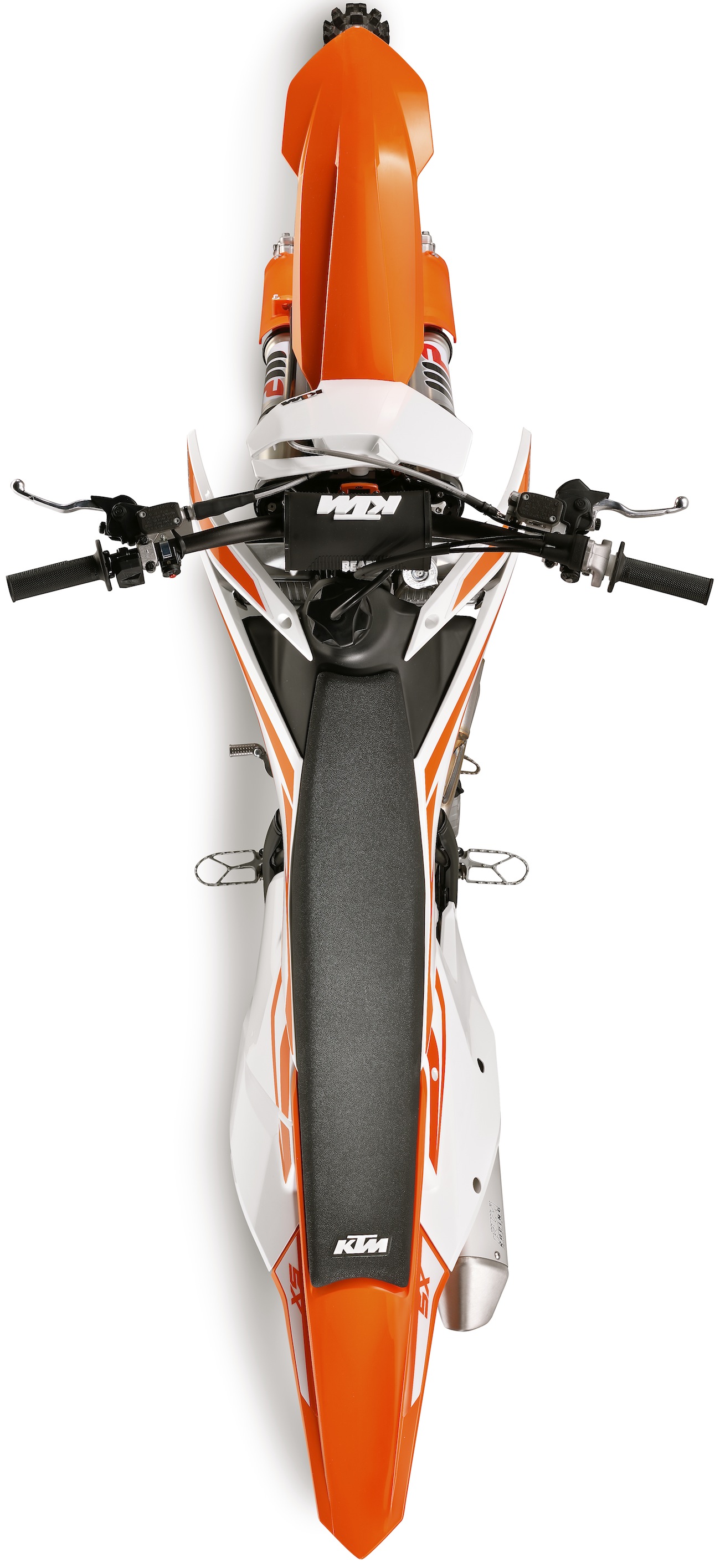




Comments are closed.